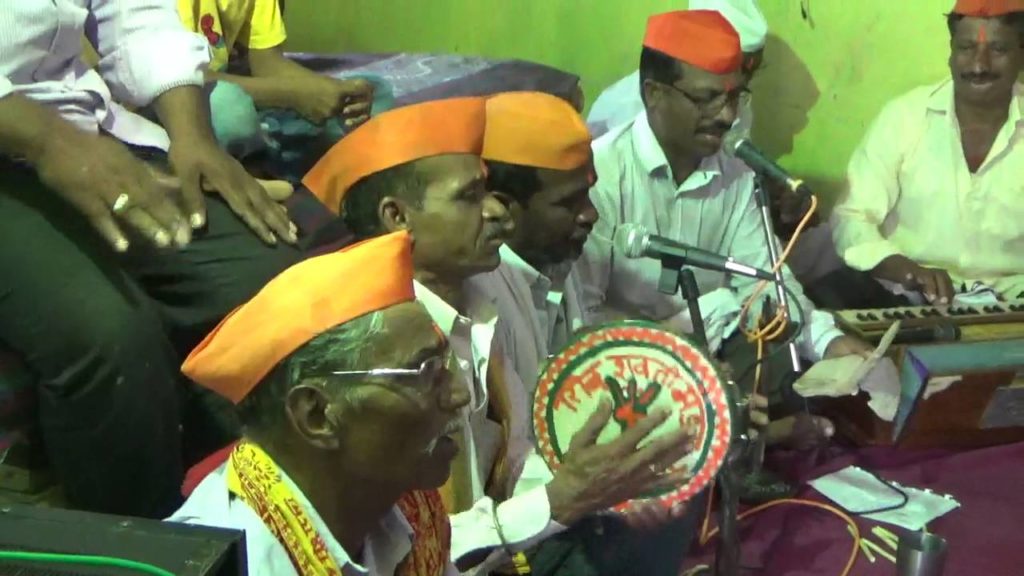महाराष्ट्रातील विदर्भ विभागातील हिंदू , मोठ्या महादेवा ची यात्रा करतात . ही यात्रा मध्यप्रदेशातील पंचमढी लगत च्या पहाडात असलेल्या २८ कि.मी. च्या रस्त्यावरून करतात. या यात्रेत मराठी भाषेत पारंपरिक गाणी गायली जातात. आणि आपापल्या गावात ही गाणी शिवमंडळात गातात. अशाच प्रकारचे हे Shiva (/ˈʃivə/; Sanskrit: Śiva, lit. the auspicious one) is one of the principal deities of Hinduism. He is the supreme god within Shaivism, one of the three most influential denominations in contemporary Hinduism.Shiva is “the destroyer” within the Trimurti, the Hindu trinity that includes Brahma and Vishnu.In Shaivism tradition, Shiva is the “creator, destroyer and regenerator” In the goddess tradition of Hinduism, the goddess is described as supreme, yet Shiva is revered along with Vishnu and Brahma, the goddess stated to be the energy and creative power (Shakti) of them, and an equal complementary partner of Shiva. He is one of the five equivalent deities in Panchayatana puja of the Smarta tradition of Hinduism.At the highest level, Shiva is regarded as formless, limitless, transcendent and unchanging absolute Brahman,and the primal Atman (soul, self) of the universe.Shiva has many benevolent and fearsome depictions. In benevolent aspects, he is depicted as an omniscient Yogi who lives an ascetic life on Mount Kailash as well as a householder with wife Parvati and his two children, Ganesha and Kartikeya. In his fierce aspects, he is often depicted slaying demons. Shiva is also regarded as the patron god of yoga, meditation and arts.The main iconographical attributes of Shiva are the third eye on his forehead, the serpent around his neck, the adorning crescent moon, the holy river Ganga flowing from his matted hair, the trishula as his weapon and the damaru. Shiva is usually worshiped in the aniconic form of Lingam.Shiva is a pan-Hindu deity, revered widely across India, Nepal and Sri Lanka.
The Sanskrit word “Śiva” (Devanagari: शिव, transliterated as Shiva or Siva) means, states Monier Williams, “auspicious, propitious, gracious, benign, kind, benevolent, friendly”.The roots of Śiva in folk etymology is “śī” which means “in whom all things lie, pervasiveness” and va which means “embodiment of grace”.The word Shiva is used as an adjective in the Rig Veda, as an epithet for several Rigvedic deities, including Rudra.The term Shiva also connotes “liberation, final emancipation” and “the auspicious one”, this adjective sense of usage is addressed to many deities in Vedic layers of literature. The term evolved from the Vedic Rudra-Shiva to the noun Shiva in the Epics and the Puranas, as an auspicious deity who is the “creator, reproducer and dissolver”.Sharma presents another etymology with the Sanskrit root śarv-, which means “to injure” or “to kill”, interprets the name to connote “one who can kill the forces of darkness”.The Sanskrit word śaiva means “relating to the god Shiva”, and this term is the Sanskrit name both for one of the principal sects of Hinduism and for a member of that sect.It is used as an adjective to characterize certain beliefs and practices, such as Shaivism.Some authors associate the name with the Tamil word śivappu meaning “red”, noting that Shiva is linked to the Sun (śivan, “the Red one”, in Tamil) and that Rudra is also called Babhru (brown, or red) in the Rigveda.The Vishnu sahasranama interprets Shiva to have multiple meanings: “The Pure One”, and “the One who is not affected by three Guṇas of Prakṛti (Sattva, Rajas, and Tamas)”.
Shiva is known by many names such Viswanathan (lord of the universe), Mahadeva, Mahesha, Maheshvara, Shankara, Shambhu, Rudra, Hara, Trilochana, Devendra (chief of the gods), Neelakanta, Subhankara, Trilokinatha (lord of the three realms), and Ghrneshwar (lord of compassion). The highest reverence for Shiva in Shaivism is reflected in his epithets Mahādeva (“Great god”; mahā “Great” and deva “god”), Maheśvara (“Great Lord”; mahā “great” and īśvara “lord”),and Parameśvara (“Supreme Lord”).Sahasranama are medieval Indian texts that list a thousand names derived from aspects and epithets of a deity. There are at least eight different versions of the Shiva Sahasranama, devotional hymns (stotras) listing many names of Shiva.The version appearing in Book 13 ( of the Mahabharata provides one such list.Shiva also has Dasha-Sahasranamas (10,000 names) that are found in the Mahanyasa. The Shri Rudram Chamakam, also known as the Śatarudriya, is a devotional hymn to Shiva hailing him by many names.The Shiva-related tradition is a major part of Hinduism, found all over India, Nepal, Sri Lanka,and Bali(Indonesia).Its historical roots are unclear and contested. Some scholars such Yashodhar Mathpal and Ali Javid have interpreted early prehistoric paintings at the Bhimbetka rock shelters, carbon dated to be from pre-10,000 BCE period, as Shiva dancing, Shiva’s trident, and his mount Nandi. However, Howard Morphy states that these prehistoric rock paintings of India, when seen in their context,


AloJapan.com